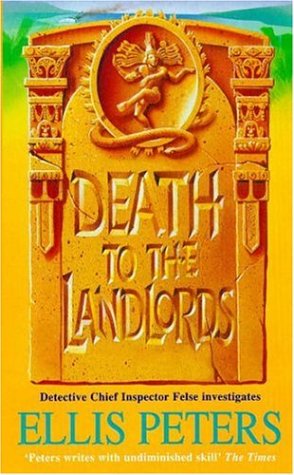The second and final Felse novel set in ‘darkest India’ is a novel that involves only Dominic Felse, whose fiancee has apparently gone back to Oxford to finish her degree, leaving Dominic to go walkabout. In other words, this is a travelogue novel, with Dominic touring the southern part of India, right down to the Cape. Along the way, he has the misfortune of running into another murder, this time by Nagalite terrorists who’s battle cry is ‘Death to the Landlords’, especially the uber-corrupt ones. Though this novel was written in 1972 (and as such Peters had skipped a year because previously there had been a novel per year in the Felse series going back to the early 1960s), it is really quite topical in its dealing with the issue of terrorism. I am pleased to see that Ms. Pargeter aka Ellis Peters embraced the non-violent approach to such issues, rather like the all-knowing Swami in these two India novels (Mourning Raga, and this one). Terrorism is of course an act of cowardice. It involves people who are mostly not brave enough to show their faces or use their real names, but instead in their hatred and anger blow up and destroy innocent people, while trying to hit their intended target. Another form of this of course on a very much smaller scale is the behavior of trolls on the internet who feel very brave so long as no one knows their real name. They hide in the shadows and lash out at things they despise, sometimes out of ignorance, or frustration, or malice aforethought.
The huge gaps between rich and poor in India of course make it a ripe place for terrorism by either revolutionaries or angry have-nots. This is what made the ministry of Gandhi so amazing in that country. it is easy, too easy, to assume that violence is the appropriate response to violence. But more violence only begets more violence, sadly. It does not usually solve any human problems in the long run, human nature being the fallen and sinful thing it is.
This novel has good suspense, it keeps you guessing to the end as to who exactly are the terrorists, and which one of the main characters seems to have been their proxy. There is also a bit of romance in the novel though without consummation or marriage. But the real energy in the novel is in the detailed descriptions of what south India was like in the 1970s, and still is very much like today. I shall not soon forget my ride in a crazy taxi from Delhi to Agra the locale of the Taj Mahal. It was a so-called toll road, the better road!, full of holes, and cows walking down the road in the wrong direct, and overloaded buses and animal carts, and chickens….and, and and. The 210 km drive takes five hours! Yikes.
This novel does a good job of making clear to Westerns the nature of the caste system and arranged marriages. I was shocked to discover that even Christians still participate in that system of working out relationships in India. Even well educated Christians. This novel also takes into account the considerable Christian populous in south India, and indeed, one of the main characters Priya, a nurse, is the child of a family that belongs to the Salvation Army Church. The novel also makes clear the nature of the theology of karma and reincarnation, so very different, and at odds with the Christian theology of individual identity into eternity, and resurrection.
This is one of the longer novels in this series, over 200 pages in most editions, and well worth the read. I would not put it in my top two, but nonetheless it is quite good. Peters by this juncture is warming up for her Cadfael series which she began writing in the later 1970s, and by now she is a master of her craft well and truly.













